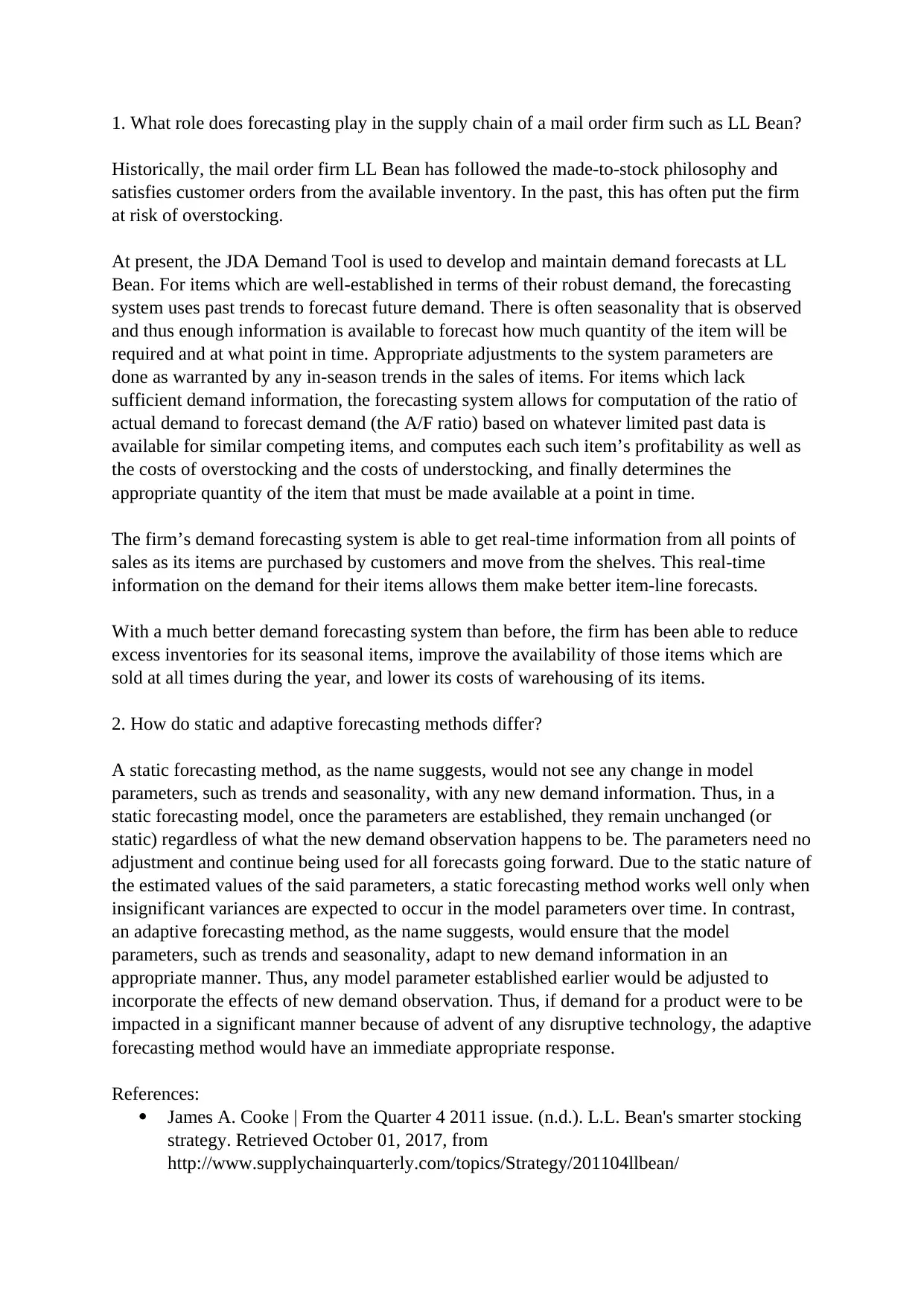Analysis of Forecasting Methods in LL Bean's Supply Chain
VerifiedAdded on 2019/09/26
|2
|633
|1484
Report
AI Summary
This report analyzes the role of forecasting in the supply chain of LL Bean, a mail-order firm that historically relied on a made-to-stock approach but now uses the JDA Demand Tool for demand forecasting. The report describes how LL Bean uses real-time point-of-sale data to improve item-line forecasts, reduce excess inventory, and lower warehousing costs. The report then contrasts static and adaptive forecasting methods. Static methods maintain constant model parameters, while adaptive methods adjust parameters based on new demand information. Static methods work well when parameter variances are insignificant, while adaptive methods are better at responding to changes caused by disruptive technologies or other significant demand impacts. The report references sources that discuss LL Bean's supply chain strategies and forecasting methods.
1 out of 2






![[object Object]](/_next/static/media/star-bottom.7253800d.svg)